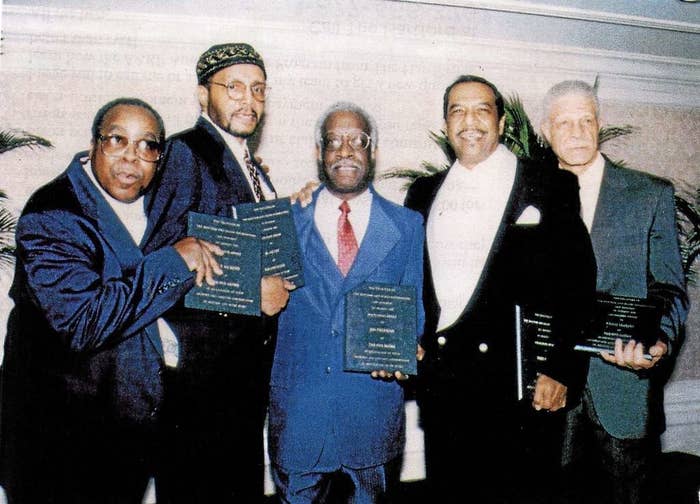
The Five Satins were relatively unknown in the music industry and starving for an opportunity to fulfill their dream of performing on stages throughout the country. However, there was only one major impediment to their vision, and they would soon discover the reason that most talented black singers would never make it from the street corners they once formed to harmonize to their favorite records on. "It was a first. You could tell I was only 21, I didn't know any better: bringing blacks into the Cove, into a church. But I just said, 'They're here to make a record,'" stated Vinny Mazzetta who played sax on the record and helped the group gain access to record the song at Saint Bernadette Church. The original Five Satins group consisted of members Jim Freeman, Fred Parris, Lewis Peeples, Stanley Dortch, Ed Martin, and Nat Mosley. In The Still of The Night, a song recorded in the basement of the Saint Bernadette Catholic School in New Haven Connecticut in 1956 fittingly set the stage to a divine career in the music industry.
Shortly after the recording was finished, the groups lead singer Fred Parris left for military service in Japan. “In the Still of the Night” became a hit, and entered the top forty later that year reaching No. 24 on Sept. 8, 1956. Jim Freeman quickly assumed leadership of the group and contacted Bill Baker and asked him to join the group to promote the record on tour. The group traveled throughout the United States and overseas and in 1957 recorded “To the Aisle,” with Mr. Baker, a tenor, as lead singer. In July 1957, the song peaked at #5 on the R&B charts and #25 on the Hot 100 and was featured in the popular film American Graffiti (1973). Without Freeman's decision to take leadership of the group The Five Satins would still be relatively unknown.
The Five Satins were pioneers in the music industry for black artists and helped form a path for many other black groups that came after them to have successful careers in the record industry. Music Billionaire Jay-Z wrote for Rolling Stone Magazine, "The primitive sound — and the fact that only four of the Five Satins were even present for the session — can't keep "In the Still of the Night," originally released as a B side, from being a sublime, definitive piece of doo-wop.”
"In the Still of the Nite" is the only song to have charted on the Billboard Hot 100 three separate times, by the same artist with the same version each time. After initially reaching No. 24 in 1956, it was released again in 1960 and reached No. 81. Then more than a year later in 1961, it reached No. 99. "In the Still of the Nite" is one of two songs that may lay claim to being the origin of the term doo-wop. The plaintive doo-wop, doo-wah refrain in the bridge has often been suggested as the origin of the term to describe that musical genre. (The other contender for the honor is "When You Dance" by the Turbans, in which the chant "doo-wop" can be heard.)
Several of the group's members went on to establish successful careers in and out of the music industry. Notably, the glue that held the pioneer group together Jim Freeman launched Freeman Legacy Group, a music memorabilia company. Through Freeman's company, his company offers autographed original 45’s, vinyl records, and other valuable music items that he’s collected over several decades in the music industry.
The pioneering group earned the following awards and honors:
Eligible for induction into the Rock & Roll Hall of Fame (1981)
Inducted into the United Group Harmony Association Hall of Fame (1995)
Inducted into the GRAMMY Hall of Fame (1998)
Pioneer Award from the American Rhythm and Blues Music Hall of Fame (1998)
Inducted into the Vocal Group Hall of Fame (2003)
Inducted into the Doo-Wop Hall of Fame (2006)

